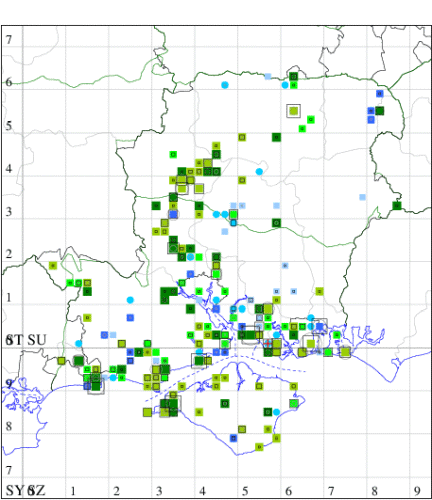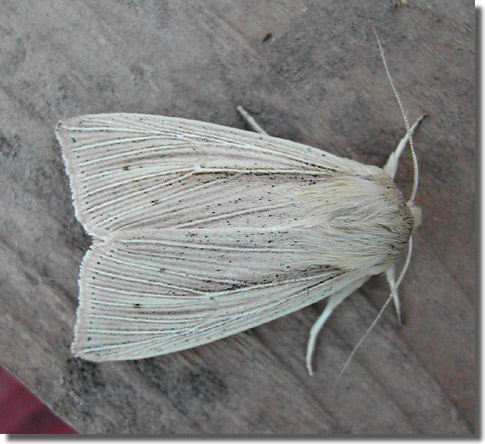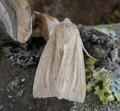Southern Wainscot
Mythimna straminea
Checklist Number73.294 [B&F: 2197]
Verification
Record will normally be accepted but photo evidence may be required - check with CMR if not sure of identity
Local in reed-beds and fens throughout much of England, south of a line from the Bristol Channel to the Wash; less common farther north, but occurs locally in mid-Wales, Cheshire, Yorkshire and Cumbria. In Hampshire Locally common in marshes and reed-beds with occasional wanderers elsewhere. On the Isle of Wight, recorded infrequently along the Eastern and Western Yar valleys. Wingspan 32-40 mm. The most likely confusion species are: Common Wainscot M. pallens, which lacks the straight termen, pointed apex and row of postmedian dots on the forewing; Obscure Wainscot M. obsoleta, which has a more narrow forewing with an even more pointed apex, and subterminal line of dots usually complete and parallel to termen; and Shore Wainscot M. litoralis, Devonshire Wainscot M. putrescens and Cosmopolitan M. loreyi, which all have pure white hindwings, as does the unrelated but not dissimilar Reed Dagger Simyra albovenosa (MBGBI Vol 9). Larva feeds on Common Reed and Reed Canary-grass.


The abundance in each month is indicated as follows:
 No records
No records Very occasional
Very occasional Irregular
Irregular Uncommon
Uncommon Off-peak, but not unusual
Off-peak, but not unusual Off-peak, but not unusual
Off-peak, but not unusual Main flight time
Main flight time| J | F | M | A | M | J | J | A | S | O | N | D | |
|---|---|---|---|---|---|---|---|---|---|---|---|---|
| Adult |  |  |  |  |  |  |  |  |  |  |  |  |
| Larval |  |  |  |  |  |  |  |  |  |  |  |  |






